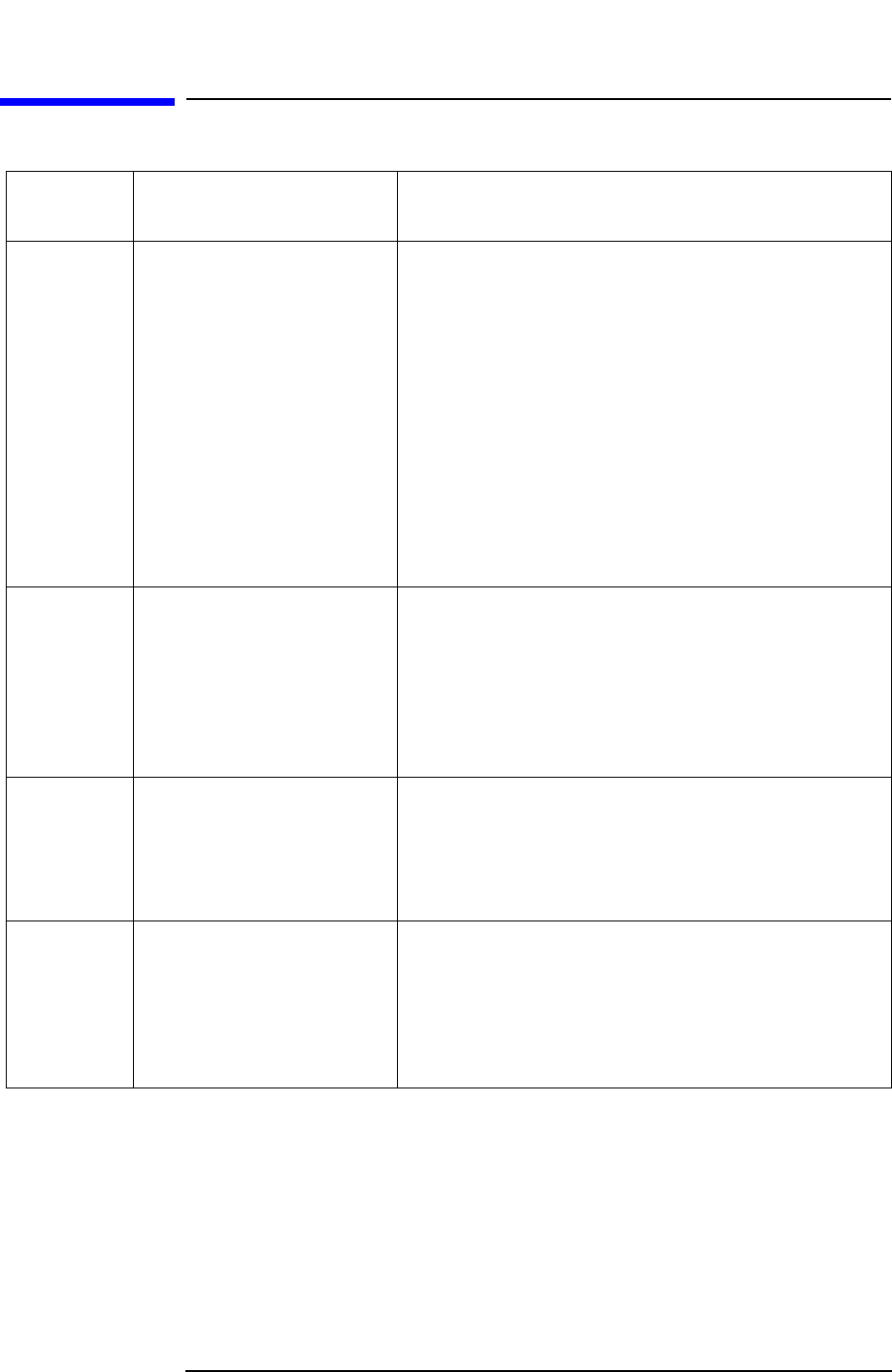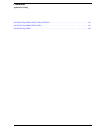
Chapter 1 41
Programming Fundamentals
Special Characters in Commands
Special Characters in Commands
Special
Character
Meaning Example
| A vertical stroke between
parameters indicates
alternative choices. The effect
of the command is different
depending on which parameter
is selected.
Command:
[:SENSe]:DETector[:FUNCtion]
NEGative|POSitive|SAMPle
The choices are neg, pos, and samp.
:SENSe:DETector:FUNCtion SAMPle is one possible
command choice.
A vertical stroke between key
words indicates identical
effects exist for several key
words. Only one of these key
words is used at a time. The
command functions the same
for either key word.
Command:
[:SENSe]:CHPower:BANDwidth|BWIDth:INTegrati
on
Two identical commands are:
:SENSe:CHPower:BANDwidth:INTegration
:SENSe:CHPower:BWIDth:INTegration
[ ] Key words in square brackets
are optional when composing
the command. These implied
key words will be executed
even if they are omitted.
Command:
[SENSe:]BANDwidth[:RESolution]:AUTO
The following commands are all valid and have identical
effects:
:bandwidth:auto
:bandwidth:resolution:auto
:sense:bandwidth:auto
< > Angle brackets around a word,
or words, indicates they are not
to be used literally in the
command. They represent the
needed item.
Command:
:SENSe:FREQ <freq>
In this command example the word <freq> should be
replaced by an actual frequency:
:SENSe:FREQ 9.7 MHz
{ } Parameters in braces can
optionally be used in the
command either not at all,
once, or several times.
Command:
[SENSe:]CORRection:CSET[1]|2|3|4:DATA:MERGe
<freq>,<rel_ampl>{,<freq>,<rel_ampl>}
A valid form of this command is:
[SENSe:]CORRection:CSET1:DATA:MERGe
740000,.94 1250000,.31 3320000,1.7


















